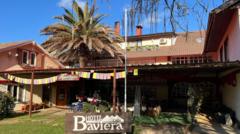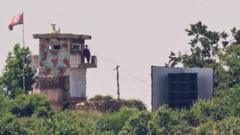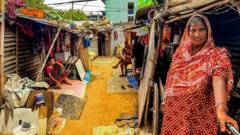Villa Baviera, once known as Colonia Dignidad, is embroiled in controversy as Chilean authorities seek to transform part of the site into a memorial for victims of political persecution under the Pinochet regime. The community, consisting of former residents and the descendants of those who suffered, is divided over the proposed expropriation and the future of the site.
Chile's Villa Baviera: A Clashing Legacy of Darkness and Redemption

Chile's Villa Baviera: A Clashing Legacy of Darkness and Redemption
The former Colonia Dignidad reflects a tumultuous history tied to human rights abuses under Pinochet, as Chile plans to turn part of it into a memorial site.
In the picturesque hills of central Chile lies Villa Baviera, a village that, despite its charming Bavarian-style architecture and friendly atmosphere, masks a horrific past steeped in violence and abuse. Previously known as Colonia Dignidad, the enclave was established in 1961 by the notorious Paul Schäfer, a leader who enforced a brutal regime over its inhabitants, many of whom were German immigrants, inflicting severe punishments, and separating children from their families while exploiting and abusing them.
As the military dictatorship of Augusto Pinochet took control in 1973, the colony became a site of torture where political dissidents were incarcerated, tortured in dark basements, and many simply vanished without a trace. While Schäfer died in prison in 2010, the land remained a source of conflict as former residents transformed the site into a tourist attraction featuring a hotel and dining options.
In a significant move reflecting Chile's ongoing struggle for truth and reconciliation, the government plans to expropriate 117 hectares of the 4,829-hectare property to create a memorial site honoring the victims of Pinochet's regime. This proposal has sparked debate among the community, which features under 100 remaining residents, including those who grew up in the colony and now grapple with the associated trauma.
The Aguayo family’s tragic story highlights the personal toll of the regime. Ana Aguayo recalls her brother Luis, taken by authorities just days after Pinochet's coup, with no news ever following. Families like the Aguayos have waited decades for acknowledgment of their loved ones' suffering, with many advocating for the memorial to shift the colony's narrative from one of exploitation to remembrance.
However, opinions among the current residents are deeply divided. Some, having lived through harrowing experiences under Schäfer’s regime, champion the government's plan for a memorial site, while others express fears that the expropriation may jeopardize their homes and livelihoods. Dorothee Munch, born in the colony, argues that these plans would victimise them anew, as they seek to rebuild their lives in a place still intertwined with their traumatic memories.
Justice Minister Jaime Gajardo has expressed the necessity for a space dedicated to remembering not just the victims of past atrocities, but also educating future generations to prevent history from repeating itself. As these discussions unfold, Villa Baviera stands at a crossroads, a site where memories of both terror and resilience collide, echoing the urgent need for understanding and closure in a divided community.

















